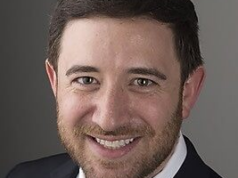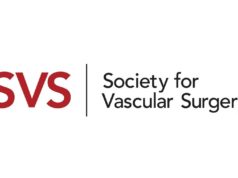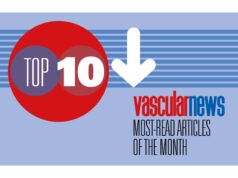
In response to a rapid augmentation of social media use in medicine over the past five years, the Society for Vascular Surgery (SVS) has published a set of recommendations on appropriate practice. The document aims to provide guidance on “how to interact online in a transparent, collegial and ethical manner while all along protecting patient privacy,” Nicolas J Mouawad (McLaren Health System, Bay City, USA) tells Vascular News. In this interview, Mouawad and joint first author Edward D Gifford (Hartford HealthCare, Hartford, USA) outline the paper’s key messages, detail how COVID-19 has “catapulted” the use of virtual communication, and consider how the use of social media in medicine might evolve.
What are the key takeaway messages from the new recommendations document?
Mouawad: The SVS is committed to supporting the appropriate and effective use of social media through honest, transparent and well-informed content. The Young Surgeons Committee of the SVS convened a diverse writing group of SVS members in different practice patterns and employment models, geographic locations, cultural backgrounds and clinical experiences to help craft a document to help guide both novice and experienced users to the use of social media platforms in vascular surgery. Key takeaway messages in a nutshell are (1) absolutely protect patient privacy, (2) obtain consent when using and sharing images, (3) ensure you follow your institution’s requirements, (4) disclose conflicts of interest, and (5) maintain an amicable and professional online environment as there are multiple specialties involved in vascular care.
Gifford: Adding to that, social media is a great melting pot of different medical specialties. We have a lot we can learn from each other, and while we may not always agree on a case that is shared, we wanted to advocate for trying to find common ground where possible while avoiding ad-hominem attacks or other cyber-bullying behaviour.
What do you think are the main benefits and drawbacks of social media in medicine?
Mouawad: Social media is a powerful tool to disseminate information, educate patients and providers, and allow for exchange of ideas, resources and knowledge, literally at the recipient’s fingertips. However, with this great ability comes responsibility and accountability. I believe the main benefit is the ease of information transmission and the ability to learn and network from other healthcare professionals that you may have never interacted with or been able to reach. The drawbacks in my mind are how to ensure the credibility of the information (to minimise the spread of disinformation) and the legitimate concern for breaching patient privacy. We must protect that at all costs! Furthermore, users of social media must be reminded that the information does NOT constitute medical advice—patients must consult their healthcare provider.
Gifford: Social media can pull us out of our medical comfort zone. Often new technology or procedures are limited to vascular surgery. For instance, at an endovascular-focused conference we might be exposed to novel therapeutic options. By comparison, how often do we find ourselves at a plastic surgery or orthopaedic trauma conference? Social media brings data from those specialties that might be very relevant to our field right to our fingertips. Take for instance the use of pie-crusting to allow for delayed primary closure of fasciotomy incisions. This technique was popularised on social media by Yelena Bogdan, an orthopaedic trauma surgeon. However, it has now been shared among many vascular surgeons on social media, and we in our group have even used it with success after learning about it online. The rapid dissemination of information and the ability to interact with other specialists in real-time can have a real positive impact on how we practice both the art and science of medicine. Of course, this is tempered with some legitimate drawbacks. First and foremost, in my opinion, is the risk to patient privacy. Just as the reach of social media goes well beyond that of a traditional lecture hall, so too does our use of an illustrative case run the risk of violating a patient’s privacy. We must make sure we look before we leap, and when in doubt, we always err on sharing as little specific information as possible.
Why do you think it was necessary to produce such a document and at this particular time?
Mouawad: Vascular surgeons are at the cutting edge of new technology and devices and are very tech savvy. It is no surprise to me that most are very active on social media already. The idea was borne of the Young Surgeons Committee of the SVS and really was focused on providing guidelines on how to interact online in a transparent, collegial and ethical manner while all along protecting patient privacy. In addition, I really do believe that COVID-19 catapulted our use of social media in an effort to maintain physical distancing and other public health parameters.
Gifford: That is a great question, and I think it is important to keep in mind that the presence of vascular surgery and vascular surgeons on social media has changed a lot from when we first contemplated this document. The idea for this sprang from the SVS Young Surgeons Committee. We noticed that more and more vascular surgeons were using social media, in particular Twitter. Personally, as a young member of that group, I was looking for some guidance about how to deal with some of the conflicts mentioned above. Could I share images of an interesting case? What is the best way to go about doing that? We also felt that social media was a great medium to interact with trainees or medical students who might be interested in vascular surgery, but maybe did not have access to a large vascular surgery interest group at their home institution. As COVID-19 encouraged online interaction for many of us, we felt that the SVS taking a positive stance on social media use was more important than ever.
How do you think social media use in medicine has changed in the COVID-19 era?
Mouawad: COVID-19 has forced us to practically move and live online. It has been very challenging in the beginning months but we have found that although we are socially distant we have never been closer. The world has become even smaller with us able to communicate with colleagues internationally, learn from them as they learn from us depending on what COVID-19 wave is occurring and where. Social media during the COVID-19 era allowed us to build new friendships and foster new relationships that continue strong. As a matter of fact, some of us on this social media writing group have actually never even met each other in person! We have communicated over social media and electronically to complete the guidelines and have e-met online! I am very much looking forward to meeting everyone in person when it is safe to do so. But social media is here to stay!
Gifford: Almost two years into COVID-19, it is impossible to not have days where we feel isolated. A lot of this was heightened early in the pandemic when we could not rely on in-person meetings to connect with trainees, peers, and mentors. Social media was a great forum to bring many of us together. Online we have been able to interact with vascular surgeons and other healthcare workers from around the country and the world, and we have built some truly worthwhile connections along the way. I love seeing colleagues share everything from a new community initiative on limb salvage, to how to tackle large varicose veins after ablation, to Play-Doh vascular anatomy. Now that at least some in-person meetings have resumed, it’s great to finally meet these people in person. However, I am hopeful that the online vascular surgery community will continue to grow on in the future.
How do you think the use of social media in medicine might evolve in the future?
Mouawad: Social media will continue to evolve, there is no doubt in my mind. We have seen how meetings have moved virtual as well as full annual conferences. Applicants and interviews are being conducted this way nowadays for ease of access and cost savings as well as online open houses for candidates. Even interest groups are becoming well developed online. This, in my opinion, is an excellent opportunity to advertise to the younger generation and literally show them with images and videos our specialty of vascular surgery.
But with more online activity, I am proud that the SVS has taken a proactive lead on this topic and am grateful to have coauthored and developed these guidelines with such a fantastic and diverse writing group of SVS members.
Gifford: I think certain things adopted during the pandemic may be here to stay, at least in one form or another. Take for instance the virtual interview process of our residency and fellowship applicants. There will likely be some virtual component to application season in perpetuity. Whether this is a virtual open-house to learn about a programme, faculty vignettes, or online journal-clubs, I think we are going to see use of social media for these group endeavors increase. While I hesitate to say that we are going to be providing patient-specific medical care on social media, we are already seeing community education events via social media forums such as Facebook live. The reality is that a lot of our patients use social media. If we want to provide factual education about vascular disease to them, social media might provide a lot of opportunity for that. Lastly, as we anticipate the intersection of social media and medicine growing, this may result in some form of oversight or regulation. To that end we are grateful to the writing group members and the SVS for backing sensible and thoughtful recommendations that make our social media use as a specialty more impactful.













